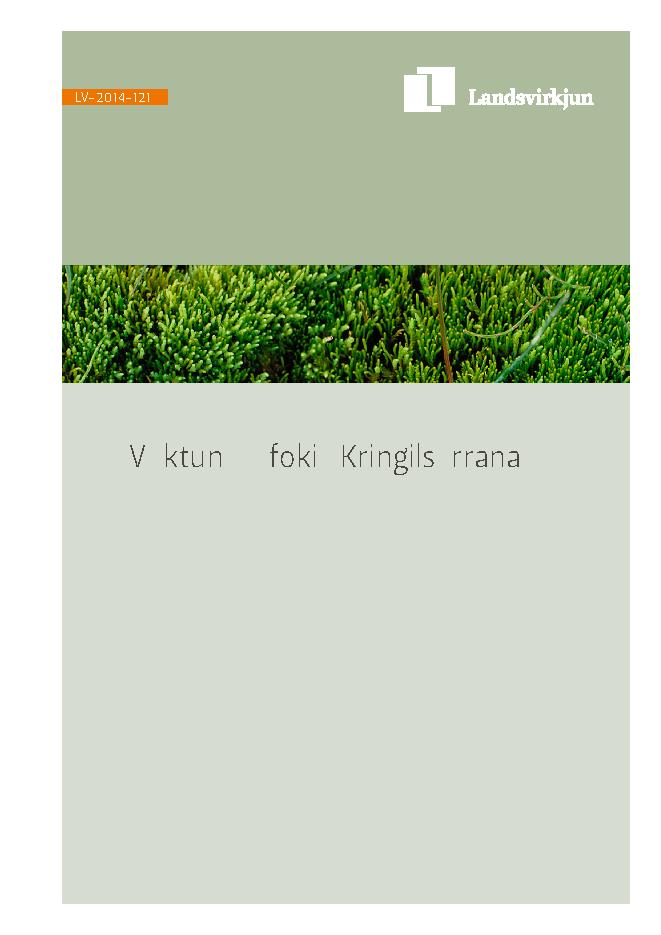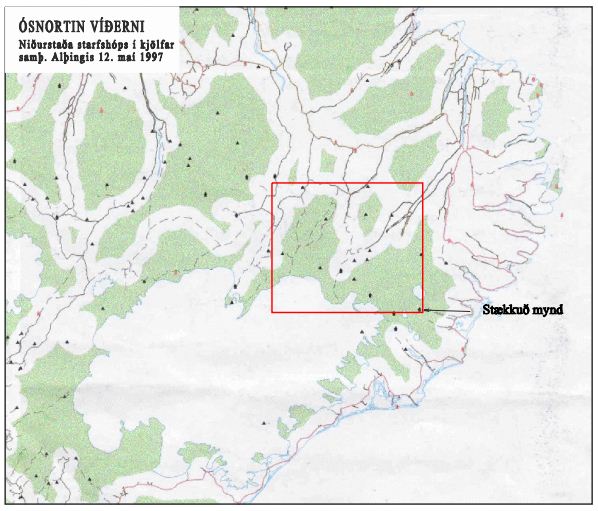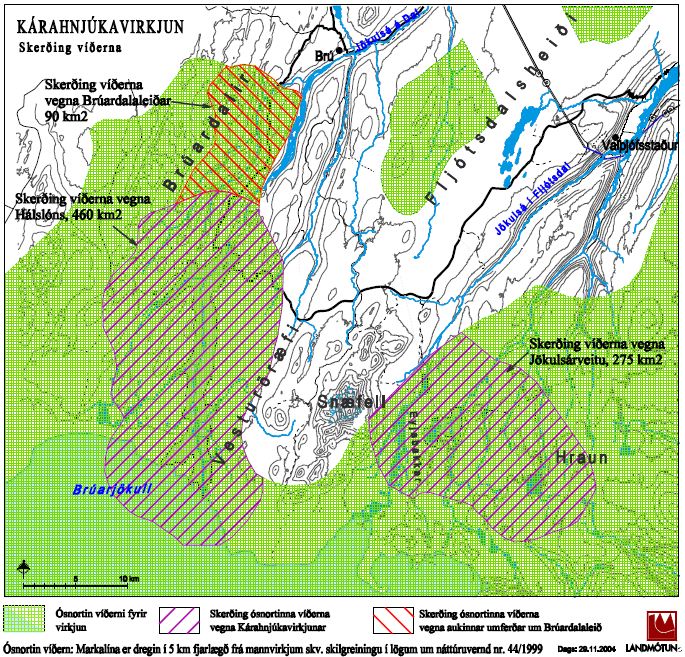Progress
There has been no reason to update Landsvirkjun’s monitoring map of the extent of wilderness reductions. Rules and definitions on the concept of wilderness are constantly being worked on, and this is the latest in the context of the National Planning Policy.
In the part of the National Planning Policy 2016-2025 that deals with the planning of the central highlands, it says:
The characteristics and natural qualities of the Central Highlands will be maintained, with an emphasis on the protection of the wilderness of the highlands, landscape units, important habitats and vegetation, and valuable cultural monuments.
Section 1.1.4 further states:
The Planning Director and the Environmental Agency have the priority of regularly updating maps of the extent and development of wilderness in the Central Highlands. This involves setting criteria for assessing the extent of wilderness from a planning point of view and having maps that are regularly updated on the extent of wilderness, accessible for the planning work of municipalities and other parties.
A new map, the first since the power plant launch, is now available with the latest information on structures, reservoirs, and roads. The “untouched” wilderness boundary has been updated to a 5 km distance from roads, reservoirs, and structures. The most significant change is due to the enlargement of the Hálslón reservoir to the south, caused by the withdrawal of the Brúarjökull glacier. Traffic has increased permanently on Brúarárleið route to the north from the west end of the Kárahnjúkar dam.
Updated: March 24, 2022
Source: Landsvirkjun (2022)
Metrics, Targets and Monitoring Protocol
What is measured?
Loss of wilderness (km2) according to the definition in Icelandic law for nature conservation. (Project effect: indirect).
Monitoring Protocol
New wilderness map was made in 2013. New maps will be made as needed if changes in the area call for them.
Targets
Area of wilderness will not decrease after construction period (in 2007).
Possible countermeasures
Not applicable, monitoring only.
Changes of indicator
This indicator was originally number 31.1. It was then named Extent of Wilderness Iceland and can be found under that number in documents of the project from 2005 and 2006.
The indicator number has been changed twice.
| Year | Nr. | Indicator name |
|---|---|---|
| 2020 | 2.2.5 | Extent of Wilderness |
| 2007 | 2.7 | Extent of Wilderness |
Baseline
The map below shows the results from a workgroup of the Ministry for the environment about which areas close to the Vatnajökull glacier should be defined as wilderness areas. The green areas represent wilderness areas. Travel routes and huts are located in the area north of the glacier, decreasing the area north of the glacier that is defined as wilderness. Some subjective estimation must decide which travel routes can be accepted within wilderness areas and which can not. The route to Snæfellsskáli hut and Sigurðarskáli hut in Kverkfjöll mountains are labelled as non-wilderness which leaves the mountain Snæfell and surrounding area outside the definition wilderness areas. According to this map, the Vatnajökull glacier and surrounding wilderness areas are 14,500 km2.
The bottom picture shows the loss of wilderness because of the Kárahnjúkar power station. Part of the loss is because of Hálslón Reservoir, around 460 km2, but the rest is because of the Jökulsárveita river diversion and facilities that will be built at Múli and Hraun, a total area of 275 km2. The total loss of wilderness because of the power plant is 735 km2. Traffic on the Brúardalaleið route has increased during summers after construction work began and it became possible to drive a circle from Fljótsdalur and Jökuldalur valleys, over the highlands and across a bridge to Kárahnjúkar. This road improvement and increased traffic adds an extra 90 km2 to the total loss of wilderness in the area.
Rationale for Indicator Selection
The landscape and visual impact of the Kárahnjúkar power project was an issue discussed in the Environmental Impact Assessment (EIA). This included the loss of wilderness in the highlands, an issue often cited in public discussion about the Kárahnjúkar dam.
Finding an appropriate definition for wilderness is not simple because human settlement has impacted most parts of the highlands in some way. Roads, bridges, and trails provide access to the highlands for motor vehicles and those vehicles influence wilderness areas so they can not be viewed as untouched. Several tourist huts and farmers searching for sheep also impact the land. Finally, one could argue that none of the highlands can be categorized as wilderness because of the changes in vegetation and soil erosion caused by overgrazing.
The Kárahnjúkar EIA used a definition of Wilderness developed by a working group of the Ministry for the Environment, but this working group was created after a decision in the parliament on May 12th, 1997, about the protection of wilderness areas. The working group definition found its way into new laws on nature conservation that were passed in 1999. Wilderness is defined as:
An area of land, at least 25 km2 or large enough so that solitude and nature can be enjoyed without disturbance from human structures or traffic from motor vehicles driving on land. The area should be at least 5 km away from human structures or other technical signs such as transmission lines, power plants, reservoirs and roads. There should be no direct human influence and nature should be allowed to develop without pressure from human activities.
Once the Kárahnjúkar power station will be operational, further loss of wilderness will mainly depend on changes in travel routes and tourism since no changes are foreseen on facilities related to the power plant.
From phase I/II report on indicators and baseline from April 2005
Further reading

LV-2014/121 - Vöktun á áfoki í Kringilsárrana
Nature conservation act (only in Icelandic)
Parliamentary resolution concerning the protection of wilderness areas (only in Icelandic)


